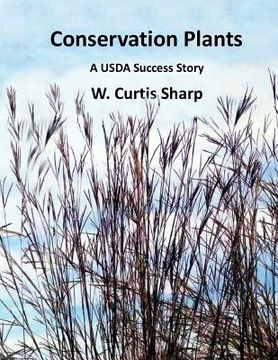Conservation Plants, A USDA Success Story: History of the Natural Resource Conservation Service Plant Materials Program (en Inglés)
Reseña del libro "Conservation Plants, A USDA Success Story: History of the Natural Resource Conservation Service Plant Materials Program (en Inglés)"
In 1935, after the dust storms of the Great Plains gripped the attention of the nation, the Soil Conservation Act acknowledged "the wastage of soil and moisture resources -- is a menace to the national welfare." From this evolved the Natural Resources Conservation Service, which included the Plant Materials Program. It had a clear mandate of finding superior plants for soil and water conservation. The black clouds carrying the richest soil in the world over Washington, headed for the Atlantic, had to be stopped. Conservation Plants, A USDA Success Story explains why such a program was needed, and who the people and the products were that made it so successful. Its first leader, Dr. Franklin Crider, fostered the idea that that "Nature had evolved a plant for every purpose." So the search was on to find them. The priorities were to stabilize millions of acres of water and wind ravaged land totally despoiled by poor farming practices, degraded rangeland by wanton overgrazing, and bleeding, unrestored mining and similar sites.How well did they do? James Smith spent the summer of 1935 around Delhart, TX, the epicenter of the Dust Bowl, collecting grass seed. He knew wind erosion. One can feel his pride years later when he wrote of a new grass quelling that wind on 500,000 acres in South Texas, thinking "There's a half million acres that won't blow again." John Schwendiman and Dr. A. L. Hafenrichter can look down upon the Great Basin of the West, knowing their fingerprints are on the plants now producing forage and protecting millions of acres of rangeland. Paul Tabor and Johnny Powell certainly realized the value of their bringing a new grass to the commercial market which converted abandoned cotton fields into high quality pastures for Southeast livestock. The conservation plants selected, evaluated and then released to the public-now well over 700 in the past 70+ years-came from within the United States and around the globe. Immediate solutions were needed to stop the soil erosion crisis. The arrival of Columbus led to virtually every ecosystem on the continent being dramatically altered. The pioneers in the Plant Materials Program used the tools available to them. The virgin forests of the south had become abandoned farmland. In the absence of available native plants, over five million acres were planted to Pensacola bahiagrass by 1980. Crested wheatgrass and others have performed equally well in the arid west, protecting the soil, producing forage and controlling noxious weeds that followed the overgrazing. Introduced annuals that came with the Spaniard's in California are now conservation plants. Like all things though, the Plant Materials Program has evolved. With the tools available to slow down the worst of the soil erosion, the program began focusing on other areas of natural resource concern. Wetland and riparian plants improve water quality, cover crops enhance the quality of agricultural soils, native grasses increase the productivity and resilience of pasture and range lands, and the additional diversity of conservation plantings using legumes, wildflowers and shrubs support many wildlife species. So, how well did they do? This story documents the history, activities, and products of the Natural Resources Conservation Service, Plant Materials Program over 75 years. Decide for yourself, but we think this is a success story worth telling.

